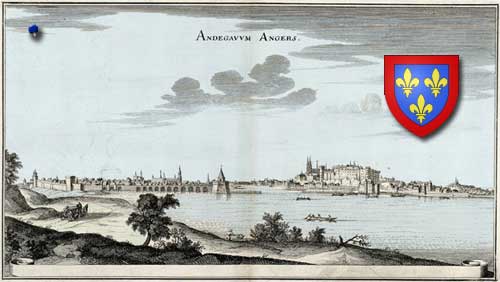Anjou.

Nestled inland between Bretagne, Maine, Poitou Tourraine, Beauce and Perche, Anjou has long had to defend its boundaries from the incursions by Bretagne and Normandie when it was not under direct control of the king.
Salt, used to preserve foods, was an important commodity. La Flèche had one of 16 salt warehouses subjected to the gabelle or high salt taxes by King Philip VI in 1343. Located in the Loire Valley, the town later became known for delicious macarons, a cookie made with egg white and almond paste which may be scented with lemons, violets, or roses.
Doué-la-Fontaine sits atop a network of caves that were used by ancients to hide from invaders. They were so well developed that in later years mushrooms were cultivated in some, and others were used as dwellings and even a zoo. Baron Foullon's interest in roses in the 1700's led to a legacy of hundreds of varieties grown in the area filling the air with their delicate fragrance centuries later.
The capital city of Angers was home to the Plantagenet dynasty who wore the English crown from 1154 until 1485. The medieval Apocalypse Tapesty, an illustration of the Book of Revelation, remains on display in the Château d'Angers. A revolt against high taxes there in 1649 led to military conflict, though leaders quickly backed down when King Louis XIV sent troops to squelch the uprising of the Angevins.
Our ancestors who emigrated from Anjou are listed below. The dates reflect the year they arrived in Canada if known, otherwise it is the date of their earliest appearances in the records there:
- Jeanne Soldé (1653) of La Flèche.
- Guillaume Chartier (1653) of La Flèche.
- Aubin Maudou (1667) of Doué-la-Fontaine.
- Michel Duveau (1674) of Angers.
- https://en.wikipedia.org/wiki/La_Fl%C3%A8che
- Image: Matthäus Merian the Elder - https://www.vintage-maps.com/de/Antike-Landkarten/Europa/Frankreich/Merian-Frankreich-Angers-1657::708.html Kupferstich mit einer Ansicht der Stadt Angers aus der Topographia Galliae
